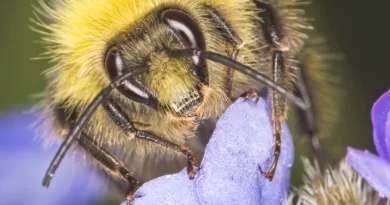Bumblebee Sting Reactions Unveiled: What You Need to Know
Bumblebee stings, though not as notorious as those of wasps or hornets, can still pack a punch. These tiny insects are an essential part of our ecosystem, playing a crucial role in pollination. However, if you’ve ever been stung by a bumblebee, you know that their stings can cause discomfort. In this comprehensive guide, we’ll delve into the world of bumblebee sting reactions. From their effects on the body to the best ways to manage them, we’ve got you covered.

Bumblebees, with their fuzzy appearance and gentle demeanor, are generally less aggressive than other stinging insects. However, when provoked or threatened, they won’t hesitate to defend themselves by delivering a painful sting. Understanding the reactions caused by bumblebee stings is important for everyone, from nature enthusiasts to those with allergies. Let’s explore the various aspects of bumblebee stings:
Bumblebee Sting Reactions Unveiled
Bumblebee stings can trigger a range of reactions in individuals. These reactions can vary based on factors such as the person’s sensitivity to stings, the location of the sting, and the number of stings received. Here’s what you need to know:
Localized Reactions
For most people, a bumblebee sting results in a localized reaction. This includes pain, redness, and swelling around the sting site. The discomfort is usually manageable and subsides within a few hours or days. Applying a cold compress and taking over-the-counter pain relievers can provide relief.
Mild Allergic Reactions
In some cases, individuals might experience mild allergic reactions to bumblebee stings. Symptoms can include increased swelling, itching, and hives beyond the sting site. These reactions can be treated with antihistamines and corticosteroid creams. However, if symptoms worsen or difficulty breathing occurs, immediate medical attention is crucial.
Severe Allergic Reactions
While rare, severe allergic reactions (anaphylaxis) can occur after a bumblebee sting. Symptoms may include difficulty breathing, rapid drop in blood pressure, and loss of consciousness. Anaphylaxis requires immediate emergency medical care. If you know you’re allergic to bee stings, always carry an epinephrine auto-injector (EpiPen) and seek medical help after using it.

See Also: Do Bumble Bees Sting? And What You Can Do About It
Dealing with Bumblebee Stings: What to Do
Encountering a bumblebee and getting stung can be unsettling. Here’s a step-by-step guide on how to manage a bumblebee sting:
- Stay Calm: If you’re stung, try to stay calm. While it’s painful, panicking can exacerbate the reaction.
- Remove the Stinger: Bumblebees don’t leave their stingers behind like honeybees. Still, it’s a good practice to gently scrape off the stinger using a credit card or your fingernail.
- Cleanse the Area: Wash the sting site with mild soap and water to prevent infection.
- Apply Cold Compress: To alleviate pain and swelling, apply a cold compress to the area for 15-20 minutes.
- Over-the-Counter Remedies: Taking an over-the-counter pain reliever like ibuprofen can help manage pain and inflammation.
- Monitor for Allergic Reactions: Keep an eye on the sting site and your body for any signs of allergic reactions. If you notice symptoms like difficulty breathing, seek medical attention immediately.

FAQs about Bumblebee Sting Reactions
Q: Can bumblebee stings be fatal?
A: While extremely rare, severe allergic reactions to bumblebee stings can be fatal if not treated promptly.
Q: How can I differentiate between a localized reaction and an allergic reaction?
A: Localized reactions cause pain and swelling only at the sting site, while allergic reactions can cause hives, itching, and swelling beyond the sting area.
Q: Are bumblebees beneficial despite their stings?
A: Absolutely! Bumblebees are crucial pollinators, aiding in the reproduction of many plants we rely on.
Q: Can I prevent bumblebee stings?
A: While encounters are hard to avoid, wearing light-colored clothing and avoiding strong floral scents can make you less attractive to bumblebees.
Q: Are bumblebee stings more painful than honeybee stings?
A: Bumblebee stings are usually less painful than honeybee stings, but individual pain tolerance varies.
Q: What should I do if I suspect an allergic reaction?
A: If you experience symptoms such as difficulty breathing, dizziness, or a rapid heartbeat, seek emergency medical attention immediately.
Conclusion
Bumblebee stings, though not typically dangerous, can lead to various reactions, ranging from localized discomfort to severe allergic responses. Understanding these reactions and knowing how to respond can make encounters with these remarkable insects more manageable. Remember, while bumblebees may sting, they play a vital role in our environment and should be respected. So, the next time you see a bumblebee buzzing around, you’ll have a better understanding of their fascinating world.
Enjoyed this article? You may also like:
Do Bumble Bees Sting? And What You Can Do About It
Do bees have knees? Facts Behind Bees Knees
Does Febreze kill Ants? Things You Need to Know
Do Ants Poop? The Fascinating answer to one of nature’s most puzzling questions!




